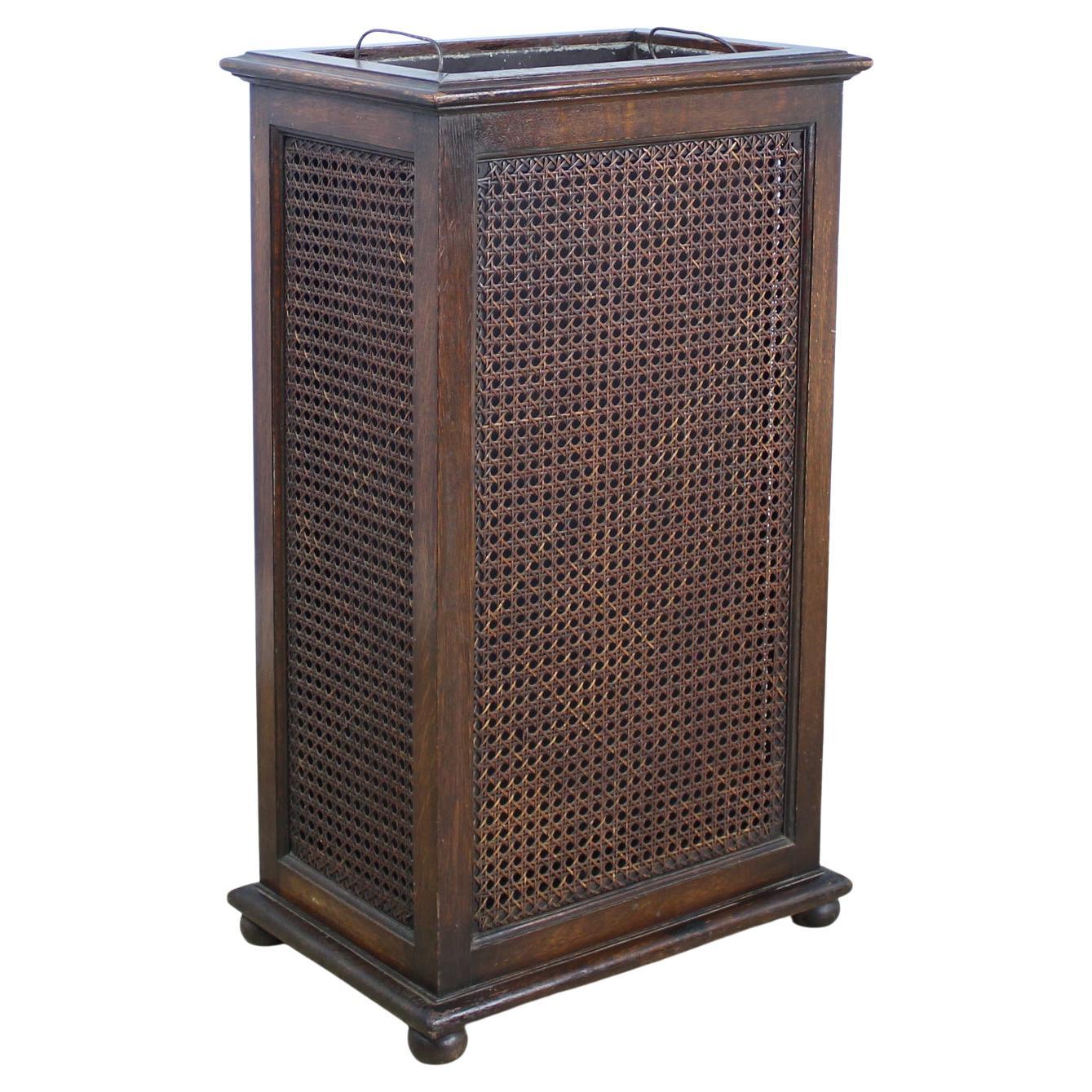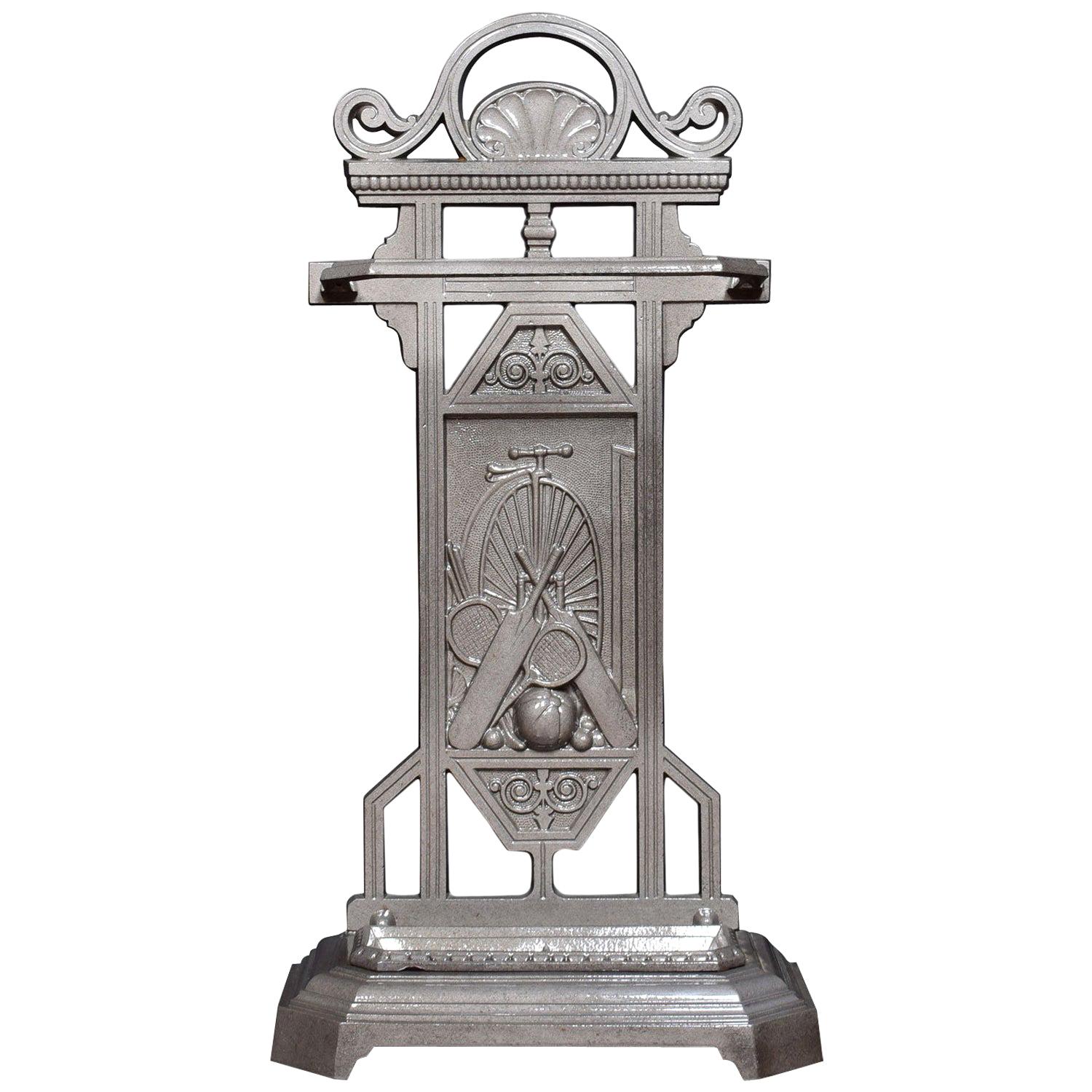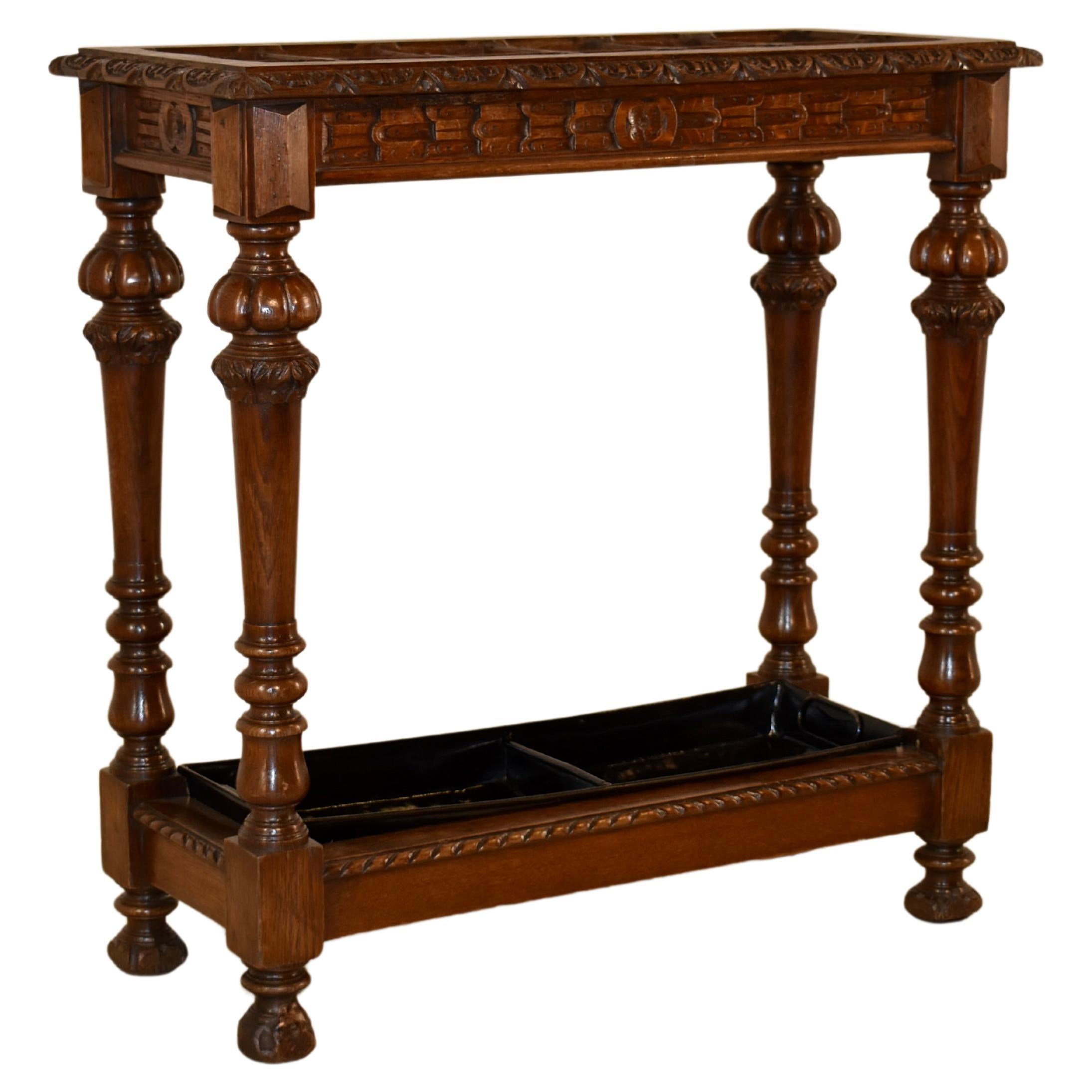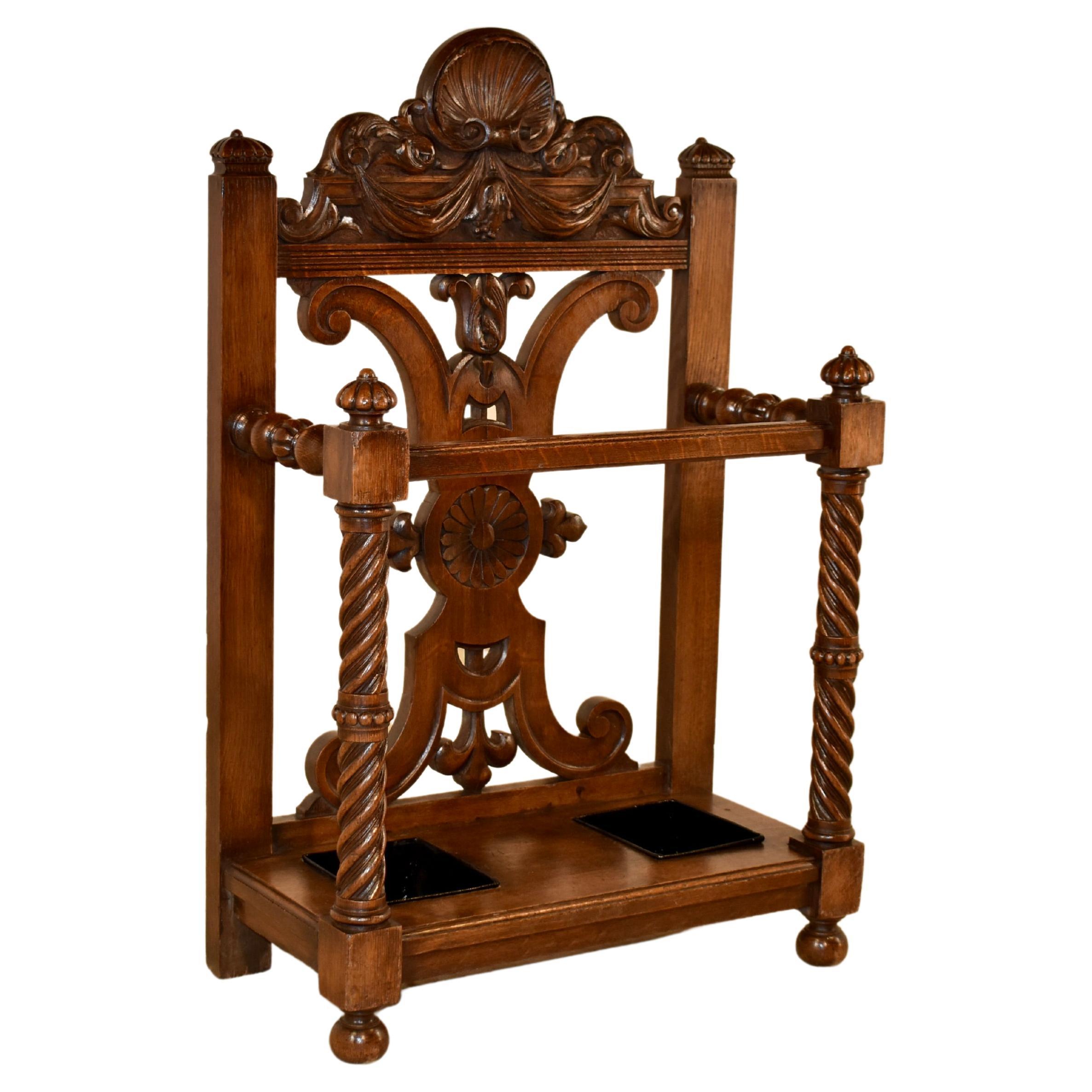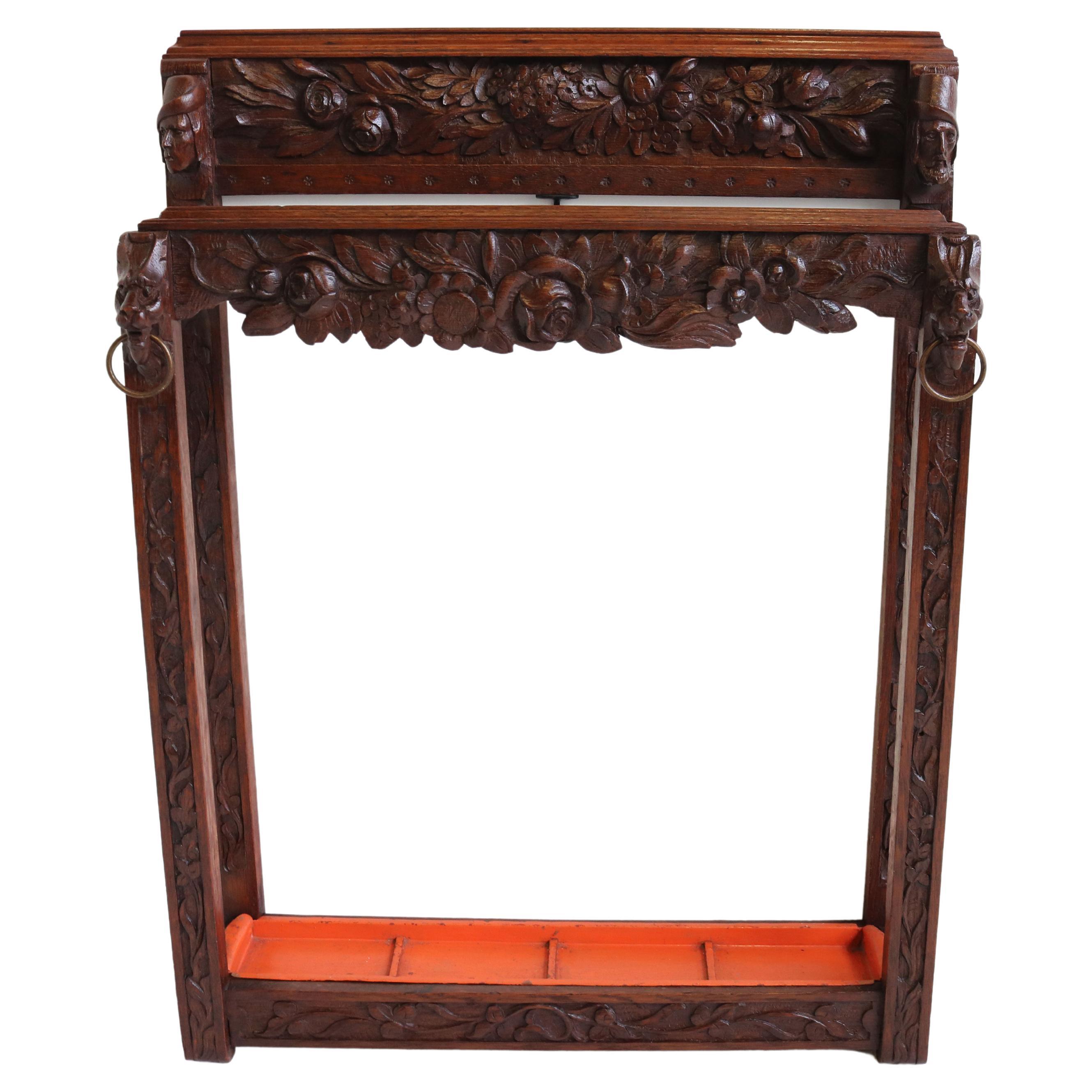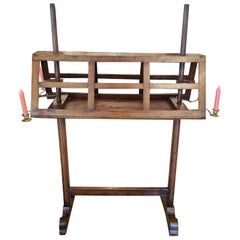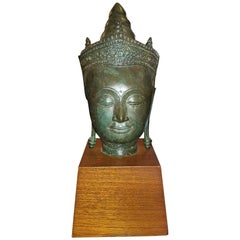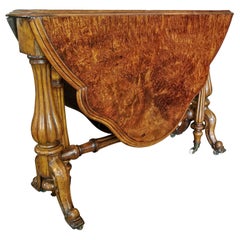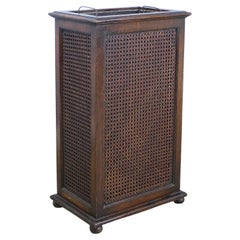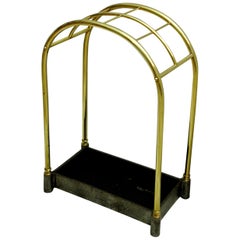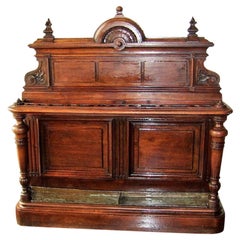
19th Century French Provincial Walnut Umbrella or Stick Stand
View Similar Items
Want more images or videos?
Request additional images or videos from the seller
1 of 11
19th Century French Provincial Walnut Umbrella or Stick Stand
About the Item
- Dimensions:Height: 39.5 in (100.33 cm)Width: 39.5 in (100.33 cm)Depth: 9 in (22.86 cm)
- Style:Art Nouveau (Of the Period)
- Materials and Techniques:
- Place of Origin:
- Period:
- Date of Manufacture:1890
- Condition:Wear consistent with age and use. Very Good condition for it's age and use.
- Seller Location:Dallas, TX
- Reference Number:1stDibs: LU3978112368103
About the Seller
4.9
Platinum Seller
These expertly vetted sellers are 1stDibs' most experienced sellers and are rated highest by our customers.
Established in 2015
1stDibs seller since 2018
349 sales on 1stDibs
More From This SellerView All
- 18C French Country Large Walnut Duet/Quartet StandLocated in Dallas, TXPRESENTING A BEAUTIFUL and EXTREMELY RARE 18C French Country Large Walnut Duet/Quartet Stand, circa 1760. Lovely proportions and beautifully carved. Perfect for a home study, libra...Category
Antique Mid-18th Century French French Provincial Music Stands
MaterialsOrmolu
- 19th Century Thai Bronze Buddha Head on StandLocated in Dallas, TXPresenting a stunning 19th century Thai bronze Buddha head on stand. From circa 1860-80 and from South Eastern Asia, most likely Thailand. ...Category
Antique 19th Century Thai Romantic Figurative Sculptures
MaterialsBronze
- 19th Century English Burl Walnut Sutherland TableLocated in Dallas, TXLate 19th century English drop-leaf table from the Mid-Victorian Era. Made of gorgeous yellowish-brown walnut with a fantastic burl walnut table top. The patina on the top is simply glorious!! The table was made circa 1850-60. It sits on beautifully turned fluted legs with the porcelain and brass casters. Two of the legs swing inwards and outwards to extend the 2 leaves of the table. Fully extended the table has a fabulous curved and indented edge, in an oval shape on both ends. The center column is beautifully turned and fluted. The 2 side columns are again beautifully turned and fluted and end with 2 extending scrolling supports that end in turned bulbous twin feet. This is a high quality item and highly desirable! Antique Sutherland Tables...Category
Antique Mid-19th Century English High Victorian Side Tables
MaterialsWalnut, Burl
- 19th Century French Napoleon III Rare Ladies Make-Up Table or VanityLocated in Dallas, TXPresenting a gloriously rare 19th century French Napoleon III rare ladies make-up table or vanity. Not many of these exceptional tables have survived and even fewer with the quali...Category
Antique Mid-19th Century French Napoleon III Vanities
MaterialsBrass, Ormolu
- 19th Century American Walnut Childs Chair with ProvenanceLocated in Dallas, TXPresenting an absolutely stunning and historic 19th century American walnut childs chair belonging to Lida Calvert Hall 1867. This Chair has impeccable provenance: It is part o...Category
Antique Mid-19th Century American American Craftsman Chairs
MaterialsWalnut
- Rare 19th Century English Tunbridgeware Hair Pin or SlideLocated in Dallas, TXPresenting an absolutely gorgeous and extremely unique and rare 19th century British Tunbridgeware hair pin/bobbin or slide. This slide is unlike any of it’s kind we have seen before…. it is a very rare survivor ! From circa 1860–1880. Made of walnut with gorgeous marquetry inlay on the entirety of the front with classic Tunbridgeware micro-mosaic all over the front. The rear is walnut. The marquetry inlay appears to be various different woods, namely, maple, walnut and satinwood. Would have been worn in a Lady’s hair bun with the micro-mosaic facing forward. This would have belonged to a very elegant lady in the mid to late 19th century. Tunbridge ware is a form of decoratively inlaid woodwork, typically in the form of boxes, that is characteristic of Tonbridge and the spa town of Royal Tunbridge Wells in Kent in the 18th and 19th centuries. The decoration typically consists of a mosaic of many very small pieces of different coloured woods that form a pictorial vignette. Shaped rods and slivers of wood were first carefully glued together, then cut into many thin slices of identical pictorial veneer with a fine saw. Elaborately striped and feathered bandings for framing were pre-formed in a similar fashion. There is a collection of Tunbridge ware in the Tunbridge Wells Museum and Art Gallery in Tunbridge Wells. The famous makers of Tunbridge ware were in the Tunbridge Wells area of Kent; their most notable work was from circa 1830-1900. Early makers of Tunbridge ware, in Tunbridge Wells in the mid-18th century, were the Burrows family, and Fenner and Co. In the 19th century, around 1830, James Burrows invented a technique of creating mosaics from wooden tesserae. Henry Hollamby, apprenticed to the Burrows family, set up on his own in 1842 and became an important manufacturer of Tunbridge ware, employing about 40 people. Edmund Nye (1797–1863) and his father took over the Fenner company when William Fenner retired in 1840, after 30 years in partnership with him. Thomas Barton (1819–1903), previously apprenticed at the Wise factory, joined the Nyes in 1836, and worked as Nye’s designer; he took over the business in 1863 and continued there until his death. In Tonbridge (near to Tunbridge Wells), George Wise (1703–1779) is known to have had a business in 1746. It continued with his son Thomas, and Thomas’s nephew George (1779–1869), who took over in 1806. In its early years the company made articles such as workboxes and tea caddies with prints of popular views; later items had pictures created from mosaics. Their workshop in Tonbridge, Wise’s Tunbridge Ware Manufactory, was next to the Big Bridge over the Medway; the building was demolished in 1886 to widen the approach to the bridge. Tunbridge ware became popular with visitors to the spa town of Tunbridge Wells, who bought them as souvenirs and gifts. Articles included cribbage boards, paperweights, writing slopes, snuffboxes and glove boxes. At the Great Exhibition of 1851, Tunbridge ware by Edmund Nye, Robert Russell and Henry Hollamby was shown; Edmund Nye received a commendation from the judges for his work. He exhibited a table depicting a mosaic of a ship at sea; 110,800 tesserae were used in making the picture. The manufacturers of Tunbridge ware were cottage industries, and they were no more than nine in Tunbridge Wells and one in Tonbridge. The number declined in the 1880s; competent craftsmen were hard to find, and public tastes changed. After the death of Thomas Barton in 1903 the only surviving firm was Boyce, Brown and Kemp, which closed in 1927. Marquetry was an old technique which was continued by Nye and Barton to create images such as birds or butterflies. ‘Green Oak’ as caused by the fungus Chlorociboria aeruginascens. Stickware and half-square mosaic was invented by James Burrows in about 1830: a bunch of wooden sticks of different colours, each having triangular or diamond-shaped cross section, were tightly glued together; in the case of stickware, the resulting block was dried, then turned to form an article such as the base of a pincushion. For half-square mosaic, thin slices were taken from the composite block, and applied to a surface.[1][2][4] Tesselated mosaic, was a development by James Burrows of half-square mosaic; it was adopted by George Wise and Edmund Nye. Minute tesserae were used to form a wide variety of geometric and pictorial designs. Many sorts of wood were used for the various colours; about 40 were in regular use. Only natural colors were used; green was provided by “green oak”, produced by the action of fungus on fallen oak. Designs for articles were often taken from designs of Berlin wool work.Category
Antique Late 19th Century English High Victorian Collectible Jewelry
MaterialsSatinwood, Walnut
You May Also Like
- 19th Century Oak and Cane Stick or Umbrella StandLocated in Port Chester, NYA good simple and compact stick or umbrella stand on four bun feet with moulded platform base. Caned sides and front enclosed in oak frame. Original metal liner with original handles.Category
Antique Late 19th Century English Umbrella Stands
MaterialsCane, Oak
- 19th Century Victorian Period Brass Stick or Umbrella StandLocated in London, GBA mid-nineteenth century Victorian Period rectangular brass stick or umbrella stand, the brass finials above six square dividers, raised on tubular supports and terminating in a blac...Category
Antique Mid-19th Century English Victorian Umbrella Stands
MaterialsBrass, Iron
- English 19th Century Curved Top Brass and Iron Umbrella Stand or Stick StandLocated in Wells, MEEnglish late 19th century curved top brass and iron umbrella stand or stick stand. This unusual form has 8 sections for sticks or umbrellas, the curved top is an art nouveau influenc...Category
Antique Late 19th Century English Art Nouveau Umbrella Stands
MaterialsBrass, Iron
- 19th Century Cast Iron Stick Umbrella StandLocated in Cheshire, GB19th century cast iron stick or umbrella stand, the backplate with sporting motif and penny farthing in background. All raised up on plinth base incorporating original drip trays. The manner reminiscent of Thomas Jekyll...Category
Antique Late 19th Century British Umbrella Stands
MaterialsIron
- 19th Century French Umbrella Stand or Fire Companion StandLocated in Whaley Bridge, GBK0343 19th century French cast iron stick stand or fire irons stand with pierced decoration and shaped drip tray, all in excellent home ready condition. c1880 Measures: H 26" W 12" ...Category
Antique 19th Century French Victorian Fireplace Tools and Chimney Pots
MaterialsIron
- French 19th Century Umbrella StandLocated in Atlanta, GAA charming later 19th century French umbrella stand in wonderful painted cast iron.Category
Antique Late 19th Century French Umbrella Stands
MaterialsIron
